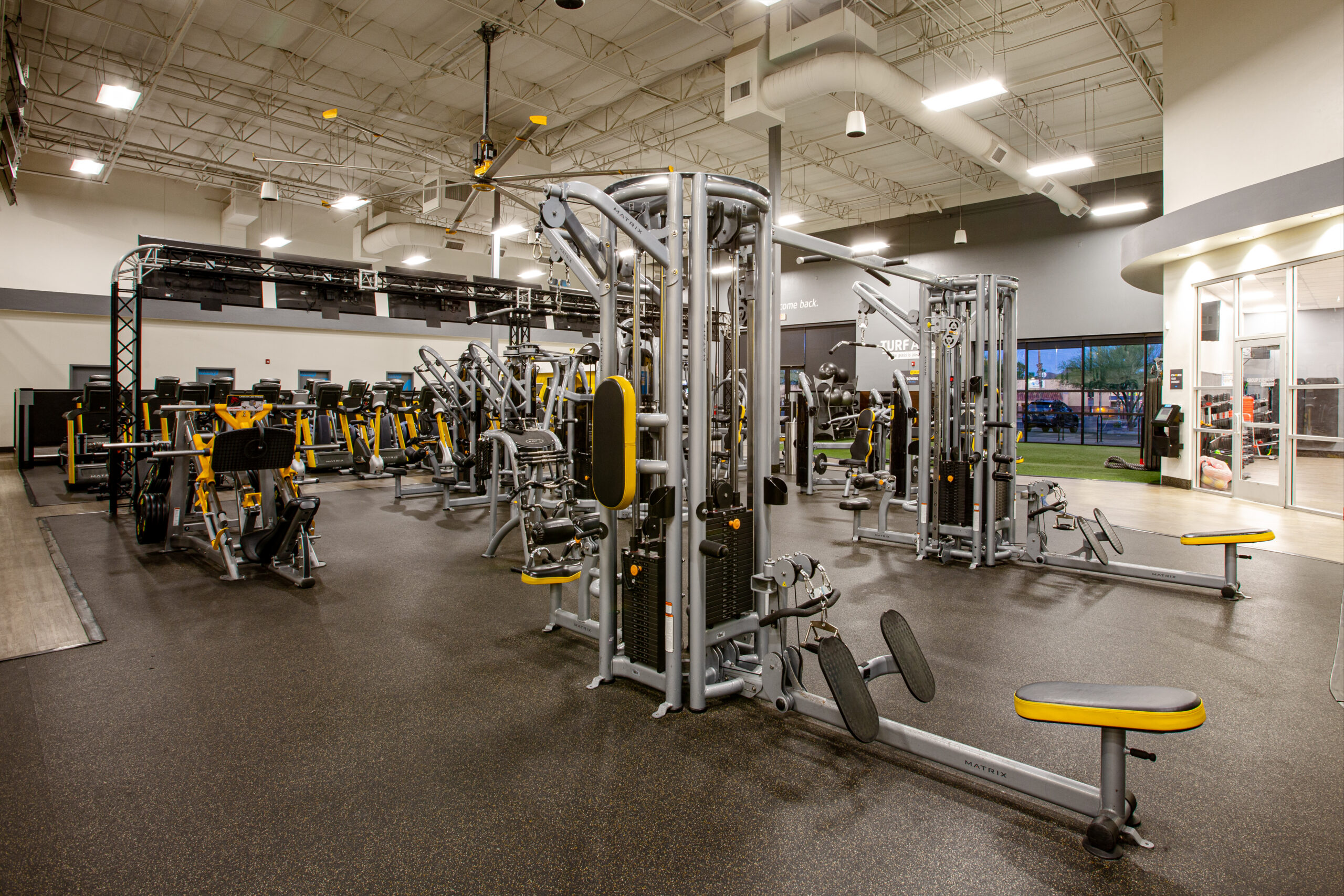
You have your exercise routine planned and you have established your goals. It’s time to go to the gym. But you may be wondering how often you should exercise and when. It’s a question asked by both beginners and seasoned gym-goers alike. Determining how often you should exercise is not a one-size-fits-all situation.
You already know the importance and benefits of exercising regularly at the gym, but it’s time to set your weekly training plan and decide how often you should exercise per week.
Importance of fitness goals:
Before determining your ideal gym frequency, it’s essential to set clear fitness goals. Is your goal to build muscle, feel healthier, or improve overall strength? Your goals will guide the frequency of your training and the intensity of your workouts. Remember, the key is to set realistic and achievable goals.
Benefits of regular gym workouts:
Regular workouts in the gym provide a host of benefits that go far beyond physical appearance. They improve cardiovascular health, boost metabolism, improve mental well-being and increase overall strength. According to the CDC, physical activity can also improve brain health, help with weight management, and reduce the risk of disease.. So, by hitting the gym regularly, you will not only improve your physical health but also your overall well-being.
Cardio workouts
Cardio exercises are essential for maintaining a healthy heart and improving brain, joint and muscle health.. Cardio exercises are also great for weight loss. It is recommended to perform 150 minutes of moderate aerobic activity or 75 minutes of vigorous activity per week..
Cardiovascular exersise
So whether you’re a beginner or a fitness enthusiast, incorporating cardio exercises into your routine offers a host of benefits. Some cardiovascular exercises to include in your routine are:
- Run or jog: Lace up your shoes and hit the road or treadmill for this classic cardio workout.
- Cycling: Hop on a bike, indoors or outdoors, and enjoy the benefits of low-impact cardio that strengthens your legs and improves cardiovascular fitness.
- Swim: Jump into the pool for a full-body workout that’s easy on your joints and offers great benefits.
- jump the rope: A simple but very effective workout that can be done anywhere and involves multiple muscle groups. and raises the heart rate.
- Dance: Dance-based cardio exercises like Zumba combine fun and fitness in one energetic session.
- High intensity interval training (HIIT): HIIT involves alternating short bursts of intense exercise with periods of rest or lower intensity activity.
- Stairs: Use the stairs instead of the elevator to work your lower body muscles and get a quick cardiovascular boost.
Strength training:
Strength and endurance training is a game changer in the fitness world. Like cardio, strength training has many benefits beyond building muscle mass. It can also improve balance and flexibility, increase endurance, promote weight loss, decrease the risk of injury, and more.. It is believed that 30 minutes to an hour of strength and resistance training is enough to reap the benefits..
Strength training exercises
The great thing about strength training is that there is an exercise to work almost every muscle in the body. Some exercises to include in your routine are:
- Squats: This powerful exercise targets the muscles in your lower body, including your quadriceps, hamstrings, and glutes. Start with your feet hip-width apart, lower your hips back into a sitting position, and push through your feet to return to a standing position. You can do bodyweight squats or add extra resistance using dumbbells, barbells, or a squat rack.
- bench press: The bench press is a classic upper body exercise that focuses on the chest, shoulders, and triceps. Lie on a flat bench, hold the bar with your hands slightly wider than shoulder width apart, lower it to your chest, and then push it up to the starting position.
- Lunges: Lunges help target the quads, hamstrings, and glutes, while also engaging the core to improve stability. Standing with both feet together, step one foot forward, lower your body by bending your knee until it forms a 90-degree angle, and then push back to the starting position. Repeat with the opposite leg.
- Bicep curls: These exercises isolate and target the biceps. Stand with a dumbbell in each hand, palms facing forward and elbows close to your sides. Bend the dumbbells up while contracting your biceps, then lower them back down.
- Glute bridges: This is another great lower body exercise that targets the glutes and helps improve hip stability and strength. Lie on your back with your knees bent, feet together and flat on the floor, and arms at your sides. Press through your heels to lift your hips off the floor until your body forms a straight line from your shoulders to your knees. Squeeze your glutes at the top and then lower your hips.
Flexibility and stretch
Flexibility and stretching exercises are often overlooked, but they are crucial to maintaining proper joint mobility and preventing injuries. Prioritize stretching and warm-up exercises to prepare your muscles for training and cool-down exercises to promote recovery and flexibility. Dynamic stretching before a workout and static stretching afterward can be beneficial.
Yoga, Pilates, or specific stretching classes can also help improve flexibility and promote relaxation. You can do them as part of your exercise routine or on a separate day dedicated to them.
Set your gym hours
The best way to determine your training frequency and how often you should go to the gym is by evaluating your time constraints. Consider your daily schedule and determine how many days a week you can realistically dedicate to the gym. Also, determine how much time you can set aside for exercise on those dedicated days. It is better to have a consistent routine than sporadic workouts.
You can also use the information above about recommended times for different types of workouts to determine how often you should exercise based on your goals.
Remember, there is no one answer when it comes to training frequency. It varies depending on individual circumstances and preferences. Listen to your body and adjust your gym schedule accordingly.
Maintain responsibility and motivation
Starting or continuing a fitness journey can be exciting. However, over time you may lack motivation or encounter challenges that test your commitment to going to the gym. That’s where responsibility and motivation come into play. Let’s look at some ways to help you stay on track.
- Set goals and track progress: Set short-term goals and track your progress. Start by setting clear and specific fitness goals. Whether it’s building muscle, losing weight, or improving overall health, having a well-defined goal will help you stay on track. Don’t forget to celebrate small and big milestones and use them as motivation to keep moving forward.
- Mingle: Avoid falling into a rut by varying your workouts to target different muscle groups. Alternate between cardio exercises, strength training, and flexibility exercises.
- Join the fitness group: Cluster fitness classes can provide structure and motivation. Attending classes that align with your goals and preferences and participating in group workouts can help you stay motivated and on track. Not to mention, you’ll be able to find a supportive community of others with similar interests and goals.
- The gym as a recovery space: Don’t limit your perception of the gym to workouts. You can also adopt it as a place for recovery and relaxation. By incorporating recovery practices into your gym routine, you will improve your overall well-being and create a positive association with the gym. Incorporate activities such as stretching, foam rolling, and sauna use.
- Listen to your body: Pay attention to your body. If you feel fatigued or experience muscle soreness, consider doing lighter workouts or rest days. Rest and recovery are important to avoid injuries and optimize physical performance.
Find the time that is best for you
Finding your ideal training frequency is a personal journey. When you have established your schedule, Chuze Gym is here to support you every step of the way.
We understand the importance of exercise and each individual’s unique fitness goals and journey. You can find a community at Chuze that will encourage you as you embark on your journey with exercise classes, various amenities, and locations across the country.
Find a location near you Today to be part of the Chuze family!
Sources:
CENTERS FOR THE CONTROL AND PREVENTION OF DISEASES. Benefits of physical activity. https://www.cdc.gov/physicalactivity/basics/pa-health/
Cleveland Clinic. The (many) benefits of cardiovascular training. https://health.clevelandclinic.org/the-many-benefits-of-a-cardio-workout/
American Health Association. American Heart Association recommendations for physical activity in adults and children. https://www.heart.org/en/healthy-living/fitness/fitness-basics/aha-recs-for-physical-activity-in-adults
Better Health Channel. Resistance training: health benefits. https://www.betterhealth.vic.gov.au/health/healthyliving/resistance-training-health-benefits
Harvard TH Chan School of Public Health. There is increasing evidence about the benefits of strength training. https://www.hsph.harvard.edu/news/hsph-in-the-news/strength-training-time-benefits/
 Reviewed by:
Reviewed by:
Ani is the Vice President of Fitness at Chuze Fitness and oversees the Group Fitness and Team Training departments. She has had over 25 years of career in club management, personal training, group exercise and instructor training. Ani lives with her husband and her son in San Diego, CA and loves hot yoga, snowboarding, and all things wellness.







